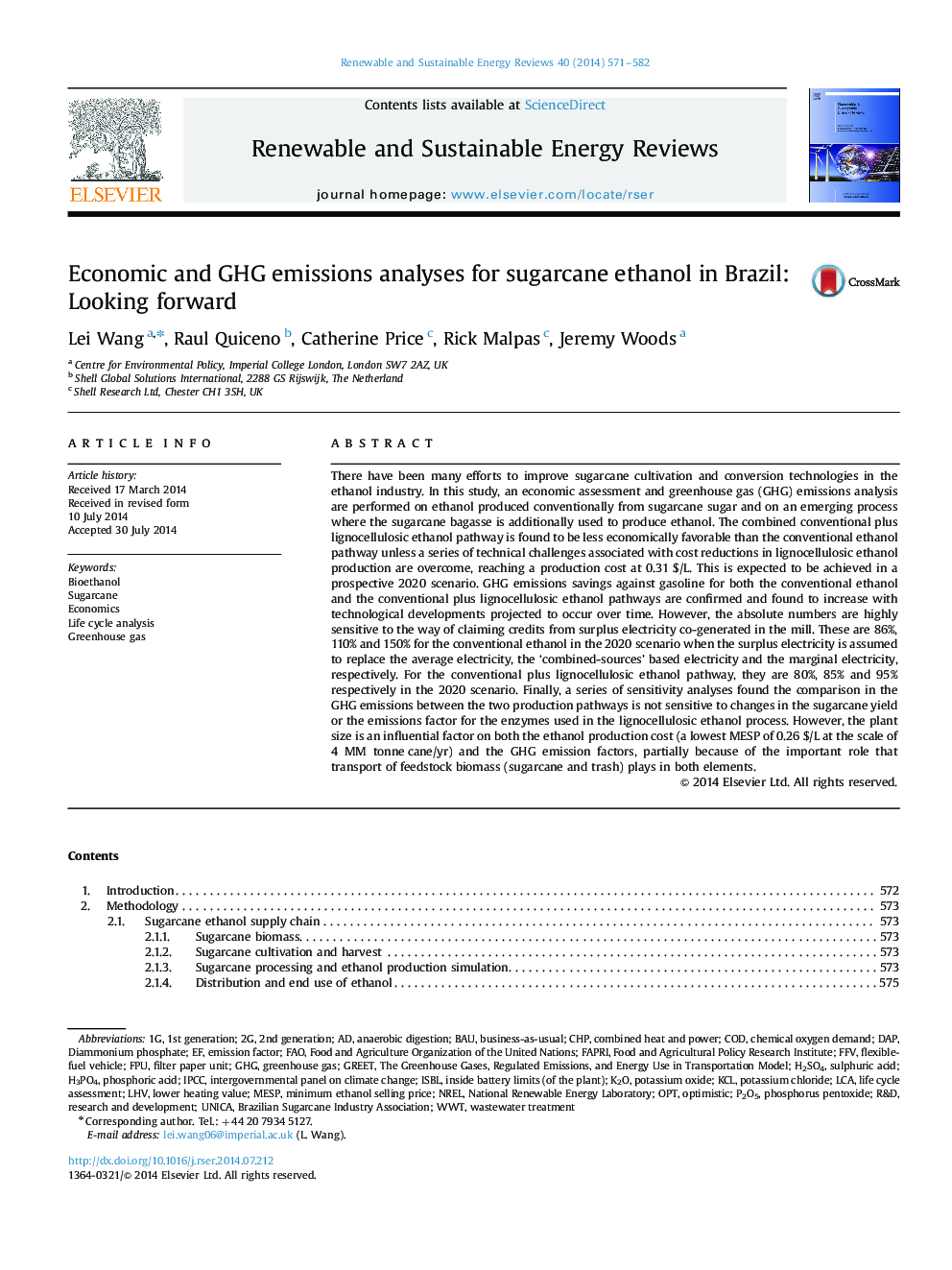| Article ID | Journal | Published Year | Pages | File Type |
|---|---|---|---|---|
| 8118833 | Renewable and Sustainable Energy Reviews | 2014 | 12 Pages |
Abstract
There have been many efforts to improve sugarcane cultivation and conversion technologies in the ethanol industry. In this study, an economic assessment and greenhouse gas (GHG) emissions analysis are performed on ethanol produced conventionally from sugarcane sugar and on an emerging process where the sugarcane bagasse is additionally used to produce ethanol. The combined conventional plus lignocellulosic ethanol pathway is found to be less economically favorable than the conventional ethanol pathway unless a series of technical challenges associated with cost reductions in lignocellulosic ethanol production are overcome, reaching a production cost at 0.31 $/L. This is expected to be achieved in a prospective 2020 scenario. GHG emissions savings against gasoline for both the conventional ethanol and the conventional plus lignocellulosic ethanol pathways are confirmed and found to increase with technological developments projected to occur over time. However, the absolute numbers are highly sensitive to the way of claiming credits from surplus electricity co-generated in the mill. These are 86%, 110% and 150% for the conventional ethanol in the 2020 scenario when the surplus electricity is assumed to replace the average electricity, the 'combined-sources' based electricity and the marginal electricity, respectively. For the conventional plus lignocellulosic ethanol pathway, they are 80%, 85% and 95% respectively in the 2020 scenario. Finally, a series of sensitivity analyses found the comparison in the GHG emissions between the two production pathways is not sensitive to changes in the sugarcane yield or the emissions factor for the enzymes used in the lignocellulosic ethanol process. However, the plant size is an influential factor on both the ethanol production cost (a lowest MESP of 0.26 $/L at the scale of 4 MM tonne cane/yr) and the GHG emission factors, partially because of the important role that transport of feedstock biomass (sugarcane and trash) plays in both elements.
Keywords
FFVIPCCWWTNRELH3PO4LHVH2SO4GHGP2O5KClFPUK2OMESPOPTCHPDAPMinimum ethanol selling priceBaUNational Renewable Energy Laboratorylower heating valueLCALife Cycle Assessmentsulphuric acidPotassium oxideBioethanolLife cycle analysisResearch and developmentR&DCombined Heat and PowerWastewater treatmentchemical oxygen demanddiammonium phosphateFood and Agriculture Organization of the United NationsGREETEconomicsFAOEmission factorPhosphoric acidSugarcaneAnaerobic digestionIntergovernmental Panel on Climate Changefilter paper unitPhosphorus pentoxideCodBusiness-As-UsualPotassium chlorideGreenhouse gas
Related Topics
Physical Sciences and Engineering
Energy
Renewable Energy, Sustainability and the Environment
Authors
Lei Wang, Raul Quiceno, Catherine Price, Rick Malpas, Jeremy Woods,
